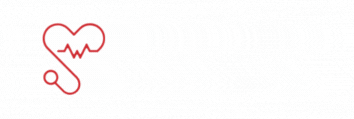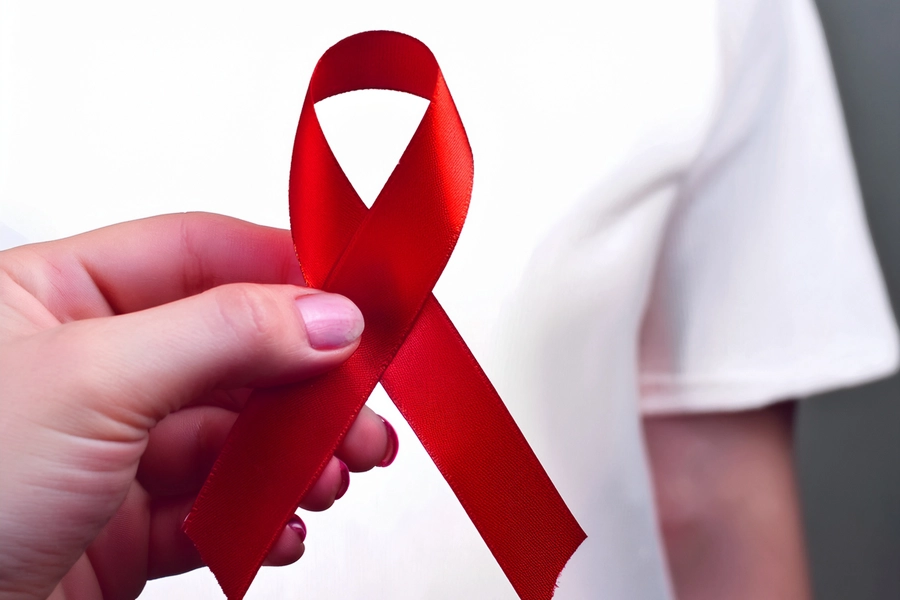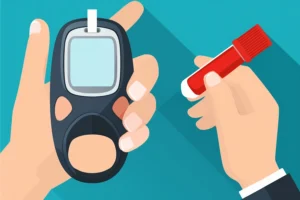Human Immunodeficiency Virus (HIV) remains one of the most significant global public health challenges, despite decades of scientific progress and awareness efforts. If left untreated, HIV can lead to acquired immunodeficiency syndrome (AIDS), a condition where the immune system becomes severely compromised.
Thanks to advances in medical science, particularly in antiretroviral therapy (ART), HIV is now a manageable chronic condition. Early diagnosis, timely treatment and sustained medical care not only improve the quality of life for those living with HIV but also significantly reduce the risk of transmission to others.
This article highlights HIV diagnosis, current treatment strategies and the essential role of lifestyle modifications. It aims to foster understanding, combat stigma and support informed health decisions in the ongoing fight against HIV/AIDS.
Diagnosis of HIV/AIDS
Accurate and early diagnosis of HIV is vital for timely initiation of antiretroviral therapy (ART), prevention of disease progression, reduction of transmission and improved long-term outcomes. Over the years, HIV diagnostic methods have significantly evolved from simple antibody detection to advanced molecular assays.1,2,3
1. Types of HIV Tests
a. Antibody Tests: Detect antibodies produced in response to HIV. Most people develop detectable antibodies within 3–12 weeks of exposure.
◦ Rapid Diagnostic Tests (RDTs): Offer results within minutes using blood or oral fluid. Suitable for point-of-care and low-resource settings.
◦ Enzyme-Linked Immunosorbent Assay (ELISA): Commonly used for large-scale screening.
b. Antigen/Antibody Combination Tests (4th Generation Tests):
◦ Detect both HIV antibodies and the p24 antigen.
◦ Reduce the diagnostic window period to ~18 days.
◦ Widely used in clinical settings due to high sensitivity.
c. Nucleic Acid Tests (NATs) / Nucleic Acid Amplification Tests (NAATs):
◦ Detect HIV RNA or proviral DNA.
◦ Useful for early detection (within 10–33 days), diagnosis in infants, blood donor screening and monitoring viral load during ART.
2. Confirmatory Testing
◦ A single positive screening result is not sufficient for diagnosis.
◦ Confirmatory tests include Western Blot, Immunoblot or HIV-1/HIV-2 differentiation assays.
◦ WHO recommends a testing algorithm and retesting before initiating lifelong ART.
3.Immunoassays
a. Generations of Immunoassays
HIV immunoassays have evolved over time to improve the accuracy and speed of diagnosis by targeting different components of the immune response and the virus itself.
| Generation | Detects | Description |
| 1st | IgG | Uses lysed viral antigens |
| 2nd | IgG | Uses recombinant/glycopeptide antigens |
| 3rd | IgG + IgM | Detects earlier antibody responses |
| 4th | p24 Ag + IgG/IgM | Shortens window period; detects acute infection |
| 5th | p24 Ag, HIV-1/2 Ab | Differentiates HIV-1 antigen and antibodies |
b. Current HIV Immunoassays in Clinical Practice
The most widely used HIV immunoassays in clinical and diagnostic settings today are the Fourth-Generation and, increasingly, the Fifth-Generation assays. These are endorsed by leading health organizations such as the World Health Organization (WHO) and the Centers for Disease Control and Prevention (CDC) for their high sensitivity and ability to detect HIV infections earlier than older testing methods.
In routine screening, Fourth-Generation tests are considered the gold standard due to their ability to detect both HIV antibodies (IgG and IgM) and the p24 antigen, significantly reducing the diagnostic window period. They are widely available and suitable for large-scale use in both hospital and community settings.
In advanced diagnostic environments, particularly where differentiation between HIV-1 and HIV-2 or viral typing is necessary, Fifth-Generation assays are gaining ground. These tests provide more detailed diagnostic information by individually identifying HIV-1 p24 antigen, HIV-1 antibodies and HIV-2 antibodies, making them valuable tools for comprehensive HIV diagnosis and epidemiological monitoring.
4. HIV Diagnosis in Infants
◦ Maternal antibodies persist in infants up to 18 months, making antibody testing unreliable.
◦ Virological tests (HIV DNA or RNA) are used at birth or 6 weeks for early diagnosis.
5. Self-Testing and Point-of-Care Innovations
a. HIV Self-Test Kits: Allow private testing using oral fluid or finger-prick blood. Enhance access, especially among populations reluctant to visit clinics.
b. Point-of-Care Tests (PoCTs): Deliver results in under 30 minutes and are ideal for outreach and mobile settings.
c. Dried Blood Spots (DBS): Enable remote testing and are compatible with laboratory assays.
6. Drug Resistance and Molecular Epidemiology
◦ Genotypic resistance testing is recommended at treatment initiation and during ART failure.
◦ Techniques like Sanger sequencing and Next Generation Sequencing (NGS) help detect drug-resistant mutations and track HIV transmission patterns.
Diagnostic Challenges
◦ False negatives may occur:
-During the window period (before antibodies or antigens are detectable).
-In the second diagnostic window (transient p24 drop before antibody appearance).
◦ Results may be affected by:
–HIV subtype variations
-Recent use of PrEP, PEP, or early ART
◦ De-identified or anonymous testing is permitted in some regions to preserve patient privacy.
Treatment of HIV/AIDS
The cornerstone of HIV treatment is antiretroviral therapy (ART), a combination of medications that suppress the virus and halt disease progression. ART doesn’t cure HIV, but when taken consistently and correctly, it reduces the viral load to undetectable levels, dramatically improving life expectancy and preventing transmission (Undetectable = Untransmittable or U=U).
Antiretroviral Therapy (ART) is recommended for all individuals diagnosed with HIV, regardless of CD4+ cell count or clinical stage. Early initiation of ART, ideally within 7 days of diagnosis and even on the same day significantly improves outcomes, provided the patient is ready and no active opportunistic infections are present.4,5,6
1. Antiretroviral Drug Classes
Each class targets a different stage in the HIV life cycle. The major FDA-approved classes include:
a. Nucleoside/Nucleotide Reverse Transcriptase Inhibitors (NRTIs)
◦ Block reverse transcriptase, halting viral DNA synthesis.
◦ Examples: Abacavir (Ziagen), Lamivudine (Epivir), Tenofovir disoproxil fumarate (Viread), Emtricitabine (Emtriva), Zidovudine (Retrovir)
b. Non-Nucleoside Reverse Transcriptase Inhibitors (NNRTIs)
◦ Bind to and inhibit reverse transcriptase.
◦ Examples: Efavirenz (Sustiva), Doravirine (Pifeltro), Rilpivirine (Edurant)
c. Protease Inhibitors (PIs)
◦ Inhibit HIV protease, preventing viral protein processing.
◦ Examples: Darunavir (Prezista), Atazanavir (Reyataz), Ritonavir (Norvir)
d. Integrase Strand Transfer Inhibitors (INSTIs)
◦ Block integration of viral DNA into host DNA.
◦ Examples: Dolutegravir (Tivicay), Raltegravir (Isentress), Cabotegravir (Vocabria)
e. Fusion Inhibitors
◦ Prevent viral entry into CD4 cells.
◦ Example: Enfuvirtide (Fuzeon)
f. CCR5 Antagonists
◦ Block the CCR5 co-receptor to prevent entry.
◦ Example: Maraviroc (Selzentry)
g. Attachment Inhibitors
◦ Bind to gp120, preventing virus binding to CD4 cells.
◦ Example: Fostemsavir (Rukobia)
h. Post-Attachment Inhibitors
◦ Block CD4 receptors after HIV have attached.
◦ Example: Ibalizumab (Trogarzo)
i. Capsid Inhibitors
◦ Interfere with capsid structure.
◦ Example: Lenacapavir (Sunlenca)
j. Pharmacokinetic Enhancers (Boosters)
◦ Improve ART efficacy by increasing drug levels.
◦ Examples: Cobicistat (Tybost), Ritonavir (Norvir)
2. Combination Antiretroviral Therapy
Multiple drugs are combined into a single daily pill or long-acting injectable to enhance adherence.
Notable combinations include:
◦ Biktarvy (BIC/FTC/TAF)
◦ Triumeq (ABC/DTG/3TC)
◦ Dovato (DTG/3TC)
◦ Cabenuva (Injectable CAB/RPV – monthly or bimonthly)
◦ Atripla, Genvoya, Symtuza, among others
3. Initial ART Regimens
Initial ART regimens are typically based on Integrase Strand Transfer Inhibitors (InSTIs) due to their several advantages in managing HIV. These include high viral suppression, which ensures effective control of the virus, and excellent tolerability, which makes these drugs easier for patients to adhere to. Additionally, InSTIs have minimal toxicity, reducing the likelihood of adverse effects. These drugs also have low drug interactions, making them suitable for patients who may need additional treatments for co-existing conditions. Furthermore, InSTIs offer a high resistance barrier, meaning the virus is less likely to develop resistance to these drugs over time, enhancing their long-term efficacy. The low pill burden associated with these regimens also improves patient adherence, as fewer pills need to be taken daily.
The recommended initial regimens include:
◦ BIC/TAF/FTC (Bictegravir, Tenofovir alafenamide and Emtricitabine), which has demonstrated strong effectiveness and is considered a preferred option (AIa).
◦ DTG + TAF or TDF with FTC or 3TC (Dolutegravir with Tenofovir alafenamide or disoproxil fumarate, combined with Emtricitabine or Lamivudine) is another highly recommended regimen due to its robust viral suppression capabilities (AIa).
◦ DTG/3TC (Dolutegravir and Lamivudine) is suitable only for patients with HIV RNA levels under 500,000 copies/mL, no resistance to lamivudine, and no co-infection with hepatitis B, offering a simplified regimen for appropriate patients.
These regimens are preferred due to their efficacy, safety and ease of use, providing a strong foundation for successful long-term management of HIV.
4. Special Considerations
a. Opportunistic Infections
◦ Start ART within 2 weeks of starting opportunistic infection treatment
◦ Exceptions:
-Tuberculous meningitis: Delay 2–4 weeks
-Cryptococcal meningitis: Start ART 2–4 weeks post-antifungal therapy, based on clinical and CSF status
b. Pregnancy
◦ Immediate ART initiation crucial for maternal and fetal health
◦ Preferred: DTG + TAF/FTC or TDF/XTC (AIa)
◦ Alternatives: BIC/TAF/FTC (BIIa) if already effective
◦ Avoid: Cobicistat-containing regimens (AIIb), doravirine, long-acting CAB/RPV, DTG/3TC (AIII)
c. After PrEP Exposure
◦ If HIV acquired while on PrEP (TAF/FTC or TDF/FTC): Initiate a 3-drug regimen (e.g., DTG or BIC + TXF/XTC) after genotyping
d. Drug-Drug Interactions
◦ Rifampin co-administration (for TB) requires ART adjustment
◦ Increase DTG to 50 mg twice daily when used with rifampin
e. Cancer and ART
When cancer is diagnosed in an HIV patient, immediate ART initiation is crucial, especially for those not previously on ART. Cancer treatments can interact with ART, requiring careful management to prevent complications. Prophylaxis for opportunistic infections should be considered based on cancer type and CD4+ count, in collaboration with oncology specialists.
5. Switching ART Regimens
◦ Virologic Suppression: If experiencing side effects or drug interactions, patients with suppressed viral load may switch to regimens like dolutegravir (DTG) or long acting cabotegravir (CAB) plus rilpivirine (RPV), unless there are contraindications.
◦ Virologic Failure or Blips: For persistent low-level viremia or virologic failure, novel agents like ibalizumab, fostemsavir or lenacapavir should be considered to ensure a fully active regimen.
Goals of ART
◦ Suppress viral load to undetectable levels
◦ Restore and preserve immune function
◦ Reduce HIV-associated morbidity and mortality
◦ Prevent onward transmission of HIV
ART Initiation Guidelines
◦ Recommended for all HIV-positive individuals, regardless of CD4 count
◦ Initiate as early as possible, ideally on the same day of diagnosis
◦ Conduct resistance testing and HLA-B*5701 testing (for abacavir)
Monitoring and Adherence
◦ Viral load monitoring: Every 3–6 months
◦ CD4 count monitoring: To assess immune recovery
◦ Lifelong adherence is essential to prevent resistance and treatment failure.
Side Effects of ART
While modern ART is generally well tolerated, side effects may include:
◦ Nausea, diarrhea, fatigue
◦ Lipodystrophy (fat redistribution)
◦ Liver/kidney issues (long-term use)
◦ Neuropsychiatric effects (Efavirenz)
Side effects should be promptly reported to a healthcare provider for possible regimen adjustment.
Virologic Failure and Resistance Management
Virologic failure occurs when ART fails to achieve or maintain an HIV RNA level below 200 copies/mL. Persistent low-level viremia between 20 and 200 copies/mL, often referred to as a “blip,” is common and typically does not require a change in treatment unless accompanied by other issues such as poor adherence or drug interactions. Clinicians should assess adherence, consider drug interactions and evaluate the possibility of impaired absorption, particularly with drugs containing multivalent cations that can affect InSTIs. If low-level viremia persists despite confirmed adherence, changes to ART regimens are not recommended, as intensification usually does not improve outcomes.
Suboptimal adherence is the most frequent cause of virologic failure and assessing potential causes (e.g., missed doses, depression or substance use disorders) is essential. Genotypic resistance testing should be performed to determine whether resistance has developed, though many contemporary ART regimens, especially those containing dolutegravir or bictegravir, have a high barrier to resistance and may continue to be effective in the absence of detectable resistance.
In patients with multidrug resistance, newer agents like ibalizumab, fostemsavir or lenacapavir may be used in combination to achieve full viral suppression. For those struggling with oral ART adherence, long-acting injectable therapies (cabotegravir + rilpivirine) may offer an alternative, especially in cases where adherence support alone has not been effective.4
Lifestyle Modifications and Non-Pharmacological Therapies
Living with HIV requires more than just medication. A holistic approach that includes lifestyle adjustments and supportive therapies can enhance health outcomes and quality of life.
1.Nutrition
◦ Balanced diet supports immune function and counters ART side effects.
-Eat plenty of vegetables, fruits, whole grains, lean proteins.
-Stay hydrated and avoid processed foods and sugary drinks.
◦ Supplements like multivitamins may be helpful, especially in areas with limited food variety (only under medical advice).
2.Physical Activity
◦ Regular exercise improves immunity, reduces stress and combats ART-related weight gain or metabolic issues.
-Aim for 150 minutes of moderate aerobic activity weekly.
-Include strength training and flexibility exercises.
3.Mental Health and Emotional Support
◦ Living with HIV can be mentally taxing due to stigma, fear and chronic illness.
–Counseling, peer support groups and psychotherapy can help manage depression or anxiety.
-Mindfulness, yoga or journaling may enhance emotional well-being.
4.Avoiding Substance Abuse
◦ Alcohol, recreational drugs and smoking can weaken the immune system and interact poorly with ART.
-Seek help for addiction through rehabilitation programs or community support.
5.Safe Sexual Practices
◦ Even with an undetectable viral load, using condoms and PrEP (Pre-Exposure Prophylaxis) for partners offers additional protection.
◦ Regular STD screenings are advised.
6.Preventing Opportunistic Infections
◦ Maintain vaccinations (e.g., Hepatitis B, HPV, Influenza, Pneumococcal).
◦ Practice hygiene and food safety to avoid infections.
◦ Prophylactic medications like Cotrimoxazole may be recommended for low CD4 counts.
7.Routine Medical Care
◦ Regular clinic visits for viral load, CD4 monitoring and early detection of complications.
Conclusion
HIV/AIDS remains a significant global health challenge, but with advancements in diagnostics, antiretroviral therapy (ART) and lifestyle management, it is now a manageable chronic condition. Early diagnosis and prompt initiation of ART are critical to halting disease progression, improving quality of life and preventing transmission. While ART remains the cornerstone of treatment, ongoing research into new therapies and potential cures offers hope for even better outcomes in the future.
Equally important is the role of lifestyle modifications such as proper nutrition, physical activity, mental health support and safe sexual practices in enhancing overall well-being and reducing the impact of disease. By integrating both medical treatment and holistic care, individuals living with HIV can lead healthier lives, free from stigma and with a reduced risk of transmission to others.
In the ongoing fight against HIV/AIDS, awareness, education and continued advancements in both medical and non-medical strategies are vital. Together, we can foster an environment of understanding and support, empowering individuals living with HIV and working toward a future where HIV is no longer a fear but a manageable condition.
References
- HIV and AIDS. WHO. Published on July 22, 2024. Accessed on April 24, 2025. Available from: https://www.who.int/news-room/fact-sheets/detail/hiv-aids
- Eloise Williams, Michael Moso, Chuan Lim, Doris Chibo, Suellen Nicholson, Kathy Jackson, Deborah Anne Williamson. Laboratory diagnosis of HIV: a contemporary overview in the Australian context. Pathology. 2023;55(5):610-620. https://www.sciencedirect.com/science/article/pii/S0031302523001253
- Parekh BS, Ou CY, Fonjungo PN, Kalou MB, Rottinghaus E, Puren A, Alexander H, Hurlston Cox M, Nkengasong JN. Diagnosis of Human Immunodeficiency Virus Infection. Clin Microbiol Rev. 2018 Nov 28;32(1):e00064-18. https://pmc.ncbi.nlm.nih.gov/articles/PMC6302353/#s3
- Rajesh T. Gandhi et al. Antiretroviral Drugs for Treatment and Prevention of HIV in Adults: 2024 Recommendations of the International Antiviral Society–USA Panel. 2025;333(7):609-628. https://jamanetwork.com/journals/jama/fullarticle/2827545
- NIH.gov. FDA-Approved HIV Medicines. HIVinfo.NIH.gov. Last Reviewed on July 31, 202. Accessed on April 24, 2025. Available from: https://hivinfo.nih.gov/understanding-hiv/fact-sheets/fda-approved-hiv-medicines
- HIV and AIDS: Medicines to Help You. US FDA. Accessed on April 24, 2025. Available from: https://www.fda.gov/consumers/free-publications-women/hiv-and-aids-medicines-help-you#CYP3A_Inhibitors




